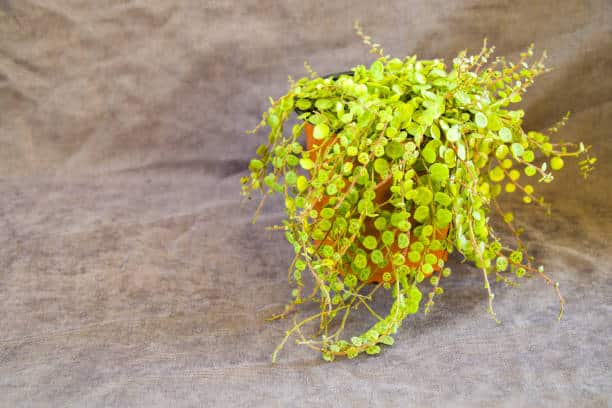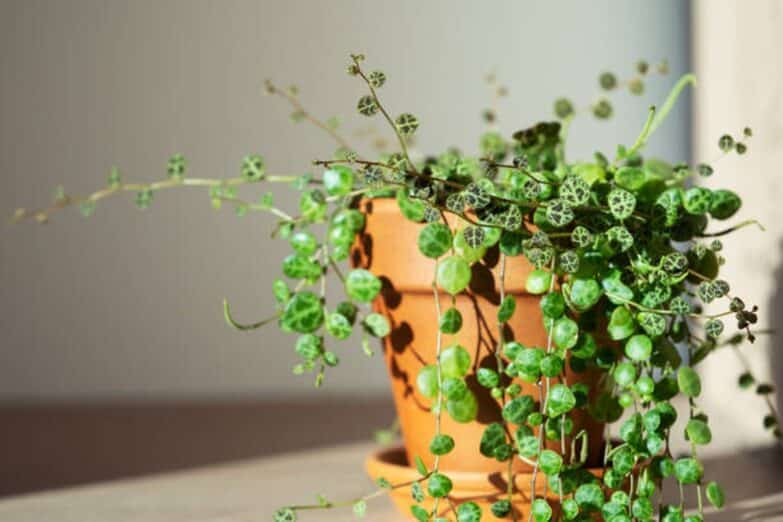The String of Turtles plant (Peperomia prostrata) is an eye-catching, low-maintenance houseplant that has gained popularity among plant enthusiasts in recent years. With its distinctive, turtle shell-like leaves and trailing growth habit, this fascinating plant adds a touch of whimsy to any indoor space. This comprehensive guide will provide you with an in-depth understanding of the String of Turtles plant, covering its origins, benefits, care essentials, and even how to propagate it. Let’s dive in and explore the enchanting world of Peperomia prostrate.
Origins and Characteristics of the String of Turtles Plant
Native Habitat and Distribution
The String of Turtles plant is native to the rainforests of South America, predominantly found in Brazil. It grows in the understory of these dense forests, thriving in the dappled light and high humidity. As an epiphytic plant, Peperomia prostrata often grows on tree trunks, rocks, or other surfaces, deriving nutrients and moisture from the surrounding environment.
Distinctive Features
The String of Turtles plant is a member of the Peperomia family, which comprises over 1,000 species of perennial, evergreen plants. It is a vining plant that produces cascading stems adorned with small, round leaves featuring intricate, turtle shell-like patterns. The leaves are typically green with white or silvery veins, giving the plant an appealing texture and visual interest. The plant’s trailing growth habit makes it perfect for hanging baskets, terrariums, or as a cascading feature on shelves or windowsills.
Benefits of the String of Turtles Plant
Air-Purifying Qualities
Like many other houseplants, the String of Turtles plant is known for its air-purifying abilities. Studies have shown that indoor plants can help remove harmful toxins from the air, such as formaldehyde, benzene, and ammonia. By absorbing these pollutants through their leaves and roots, plants like Peperomia prostrata contribute to a healthier indoor environment, making them an excellent addition to your home or office space.
Aesthetic Appeal
The String of Turtles plant’s unique appearance and trailing growth habit make it a visually appealing choice for any indoor space. Its delicate, patterned leaves and cascading stems create a sense of movement and softness that can complement a variety of interior design styles. The plant can also be used as a focal point in a room, drawing the eye and adding a touch of natural beauty to your living space.
Low-Maintenance Care
One of the main reasons the String of Turtles plant is so popular among plant enthusiasts is its low-maintenance care requirements. Unlike some other houseplants, Peperomia prostrata is relatively easy to care for, making it an excellent choice for both seasoned plant collectors and beginners alike.
Care Essentials for a Healthy String of Turtles Plant

Light Requirements
As an understory plant native to rainforests, the String of Turtles plant prefers bright, indirect light. It can tolerate some direct sunlight, but prolonged exposure can cause the leaves to become scorched or faded. If you’re unsure about the light levels in your space, placing the plant near an east or west-facing window is generally a safe bet. Keep in mind that too little light can result in slower growth and less vibrant leaf patterns.
Watering and Humidity
Proper watering is essential for maintaining a healthy String of Turtles plant. It is important to strike a balance between keeping the soil consistently moist and avoiding overwatering, which can lead to root rot. Generally, you should allow the top inch of soil to dry out before watering your plant thoroughly, allowing any excess water to drain away. Be sure to use a well-draining potting mix and a container with drainage holes to prevent waterlogged soil.
Humidity is another important factor to consider, as the String of Turtles plant thrives in a high-humidity environment. Aim for a humidity level of around 50-60%. To achieve this, you can use a humidifier, group your plant with other humidity-loving plants, or place a tray filled with water and pebbles beneath the plant’s pot. Misting the plant occasionally can also help maintain humidity, but be careful not to overdo it, as excessive moisture on the leaves can lead to fungal issues.
Temperature and Air Circulation
Peperomia prostrata prefers moderate temperatures, ideally between 65°F and 75°F (18°C and 24°C). It can tolerate temperatures as low as 50°F (10°C), but anything lower may cause damage to the plant. Avoid placing your String of Turtles plant near drafty windows, doors, or air vents, as sudden temperature fluctuations can stress the plant and lead to leaf drop.
While the plant enjoys humidity, it also requires good air circulation to prevent the growth of mold and mildew. Ensure that your plant is in a well-ventilated area and not crowded among other plants, which can restrict airflow.
Fertilization and Soil
Fertilizing your String of Turtles plant is essential for promoting healthy growth. Use a balanced, water-soluble fertilizer diluted to half strength every 4-6 weeks during the growing season (spring and summer). Reduce fertilization during the fall and winter months, when the plant’s growth naturally slows down.
A well-draining potting mix is crucial for maintaining the health of your Peperomia prostrata. A mixture of equal parts peat moss, perlite, and coarse sand is ideal, as it provides the necessary drainage and aeration while retaining some moisture. Alternatively, you can use a commercially available potting mix formulated for succulents or epiphytic plants.
Propagating Your String of Turtles Plant
Leaf Cuttings
One of the easiest methods for propagating your String of Turtles plant is through leaf cuttings. To do this, carefully remove a healthy leaf from the stem, ensuring that you also include a small portion of the stem itself. Place the cutting in a small pot filled with a moist, well-draining potting mix, ensuring that the stem portion is buried just below the soil surface. Cover the pot with a plastic bag or place it in a propagation box to maintain humidity, and place it in a warm, brightly lit area. Keep the soil consistently moist, and you should start to see new growth within a few weeks.
Stem Cuttings
Another effective propagation method is stem cuttings. To do this, take a healthy stem section with at least two leaves and cut it just below a node (the point where the leaves attach to the stem). Remove the bottom leaf, and place the cutting in water or moist potting mix. If using water, change it regularly to keep it fresh and clean. The cutting should develop roots within a few weeks, at which point it can be transferred to a pot filled with well-draining potting mix.
Conclusion
The String of Turtles plant is a captivating, low-maintenance houseplant that offers numerous benefits, from air purification to aesthetic appeal. By providing the proper care in terms of light, water, temperature, humidity, and soil, you can enjoy a lush, healthy plant that will thrive in your indoor space. Additionally, with simple propagation techniques like leaf and stem cuttings, you can easily share this enchanting plant with friends and family or expand your own collection.

